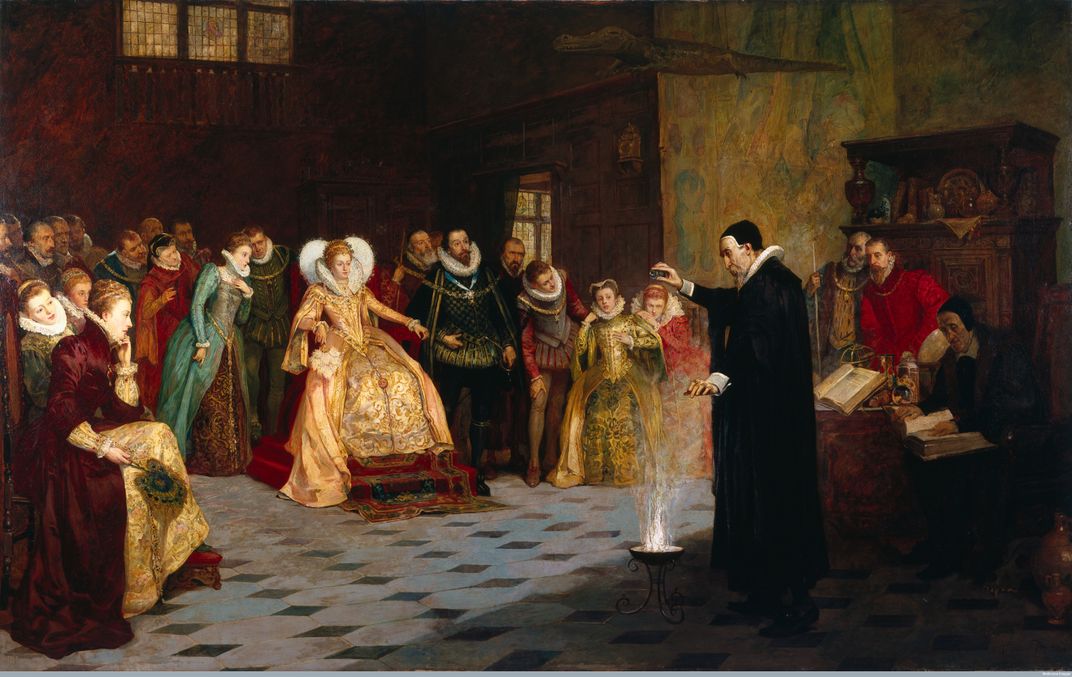John Dee’s Life Shows Science’s Magical Roots
His life shows a time when science and magic intersected–even for scientists
/https://tf-cmsv2-smithsonianmag-media.s3.amazonaws.com/filer/5e/77/5e7764c2-d4f1-438d-96e2-16de6d470da8/dee_edited.jpg)
John Dee, born on this day 490 years ago, was Queen Elizabeth I’s scientific advisor–but he was also a magician.
He carried on a lengthy conversation with spirits. But he was also a Cambridge-educated scientist who did postgraduate work with the likes of Gerardus Mercator, a cutting-edge mapmaker in a time where maps were–as today–essential technology. He was an authority on navigation who was “intimately involved in laying the groundwork for several English voyages of exploration,” writes Encyclopedia Britannica. He even suggested that England should adopt the Gregorian calendar.
In 2017, these different roles might be played by totally different branches of government. “Dee is more or less uncategorisable by today’s standards,” writes Philip Ball for New Scientist. “Some of his Tudor contemporaries might have considered him a philosopher, an astrologer, perhaps even a magician–but they would have agreed that he was, above all, a mathematician.” Technically, that was the role he played at Queen Elizabeth’s court.
“And what did Dee do with math? He cast horoscopes, practiced numerology and alchemy, and sought occult codes that would permit conversations with angels in the language used by Adam,” writes Ball. Queen Elizabeth relied on him for astrology as well as for his other skills. Being court mathematician was inextricably entwined with the role of court magician (although that wasn’t a title he or anyone else held during the Elizabethan age.)
“The magic and alchemy he practiced, while never uncontroversial, were intimately woven together with his investigations into religion, mathematics and natural science,” writes Tim Martin for The Telegraph. Dee was a scientist who used the tools at his disposal to investigate the world around him, just like his contemporaries Francis Bacon–originator of the modern scientific method–and Galileo Galilei.

Dee did most of his work at his home in a river district called Mortlake, where he kept a collection of more than 4,000 books–bigger than the libraries of Oxford and Cambridge, writes Martin. With subjects ranging from mathematics and poetry to religion and astronomy, the collection was as varied as his professional pursuits. He also possessed a collection of magical artifacts, such as a magic mirror used for communicating with spirits and a crystal ball.
And this was...kind of normal for the period. “The occult sciences enjoyed a kind of Renaissance in later Elizabethan England as print and translation made ancient, medieval and earlier Renaissance texts available to would-be English adepts,” writes academic Paul S. Seaver. John Dee, like other scientific minds of the period, engaged with the occult as a way of gaining more information about the world–a world in which spirits were potentially as real as gravity. The empirical worldview of Francis Bacon “may ultimately have triumphed,” he writes, “but in the last decades of the sixteenth century, it was not at all evident that the future did not belong to those following in the footsteps of Dr. John Dee, mathematician, astrologer, alchemist, cartographer, and magus.”